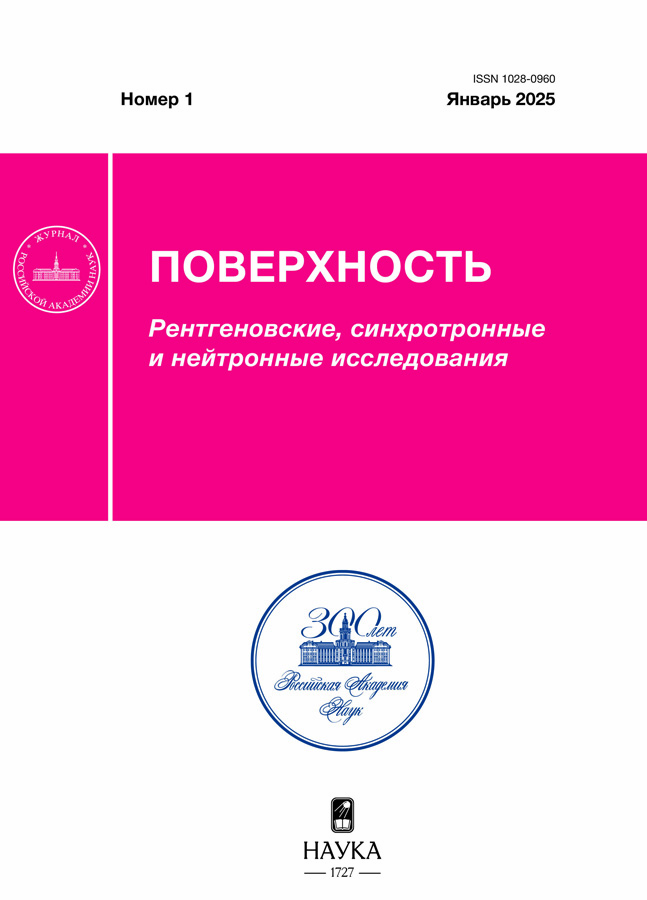Influence of Etching Modes on the Surface Topography of Silicon Plates and Their Adhesion Properties
- Autores: Shcherbakova О.О.1, Muravyeva T.I.1, Tsukanov I.Y.1
-
Afiliações:
- Ishlinsky Institute for Problems in Mechanics, Russian Academy of Sciences
- Edição: Nº 1 (2025)
- Páginas: 109-116
- Seção: Articles
- URL: https://rjmseer.com/1028-0960/article/view/686110
- DOI: https://doi.org/10.31857/S1028096025010158
- EDN: https://elibrary.ru/AAARQH
- ID: 686110
Citar
Texto integral
Resumo
In the design of a certain class of microelectromechanical systems, contact pairs are used consisting of a silicon plate and an element made of softer material. Under mechanical loading of such contacts, the adhesive interaction of the surfaces plays a significant role due to their relative smoothness. The adhesion forces in the contact of surfaces will significantly depend on their topography. The samples of electrical silicon etched in a medium of acids KO+KOH+KNO3, differing in the ratio of its components and exposure time, are studied. The condition of the surface of the samples was investigated using optical, electron and probe microscopy. The parameters of surface roughness after etching have been determined using probe microscopy. An increase in the etching time leads to an increase in the surface roughness. The concentration of acids affects the surface topography of the samples, i.e., an increase in concentration promotes the formation of a surface with a regular microrelief, close in the shape of irregularities to sinusoidal waviness. A mathematical model is proposed to assess the influence of microrelief parameters on the adhesion force in contact with a smooth elastic surface. The calculation results have shown that the height parameters of roughness have the greatest influence on the adhesion properties of the sample surfaces.
Texto integral
Sobre autores
О. Shcherbakova
Ishlinsky Institute for Problems in Mechanics, Russian Academy of Sciences
Autor responsável pela correspondência
Email: shcherbakovaoo@mail.ru
Rússia, Moscow, 119526
T. Muravyeva
Ishlinsky Institute for Problems in Mechanics, Russian Academy of Sciences
Email: shcherbakovaoo@mail.ru
Rússia, Moscow, 119526
I. Tsukanov
Ishlinsky Institute for Problems in Mechanics, Russian Academy of Sciences
Email: shcherbakovaoo@mail.ru
Rússia, Moscow, 119526
Bibliografia
- Белов Л.А. // Электроника: Наука, технология, бизнес. 2008. № 2. С. 20.
- Verma G., Mondal K., Gupta A. // Microelectron. J. 2021. V. 118. P. 105210. https://doi.org/10.1016/j.mejo.2021.105210
- Невлюдов И.Ш., Евсеев В.В., Бортникова В.О. // Технология приборостроения. 2014. № 1. С. 47.
- Tuan A.P., Hold L., Lacopi A., Nguyen T.-K., Cheng H.H., Dinh T., Dao D.V., Ta H.T., Nguyen N.-T., Phan H.-P. // Sensors Actuators. A. 2021. V. 317. P. 112474. https://doi.org/10.1016/j.sna.2020.112474
- Zhuang Y.X., Menon A. // Tribol. Lett. 2005. V. 19. № 2. P. 111. https://doi.org/10.1007/s11249-005-5088-1
- Svetovoy V.B., Melenev A.E., Lokhanin M.V., Palasantzas G. // Appl. Phys. Lett. 2017. V. 111. № 1. P. 011603. https://doi.org/10.1063/1.4991968
- Wu L., Golinval J.-C., Noels. L. // Tribol. Int. 2013. V. 57. P. 137. https://doi.org/10.1016/j.triboint.2012.08.003
- Ardito R., Corigliano A., Frangi A. // Eur. J. Mechan. A. 2013. V. 39. P. 144. https://doi.org/10.1016/j.euromechsol.2012.11.008
- Ardito R., Frangi A., Corigliano A., De Masi B., Cazzaniga G. // Microelectron. Reliab. 2012. V. 52. P. 271. https://doi.org/10.1016/j.microrel.2011.08.021
- Ling F.Z., De Coster J., Lin W.-Y., Witvrouw A., Celis J.-P., De Wolf I. // Sensors Actuators. A. 2012. V. 188. P. 320. https://doi.org/10.1016/j.sna.2012.01.011
- Balabanava N., Wierzbicki R., Zielecka M., Rymuza Z. // Microelectron. Eng. 2007. V. 84. Iss. 5–8. P. 1227. https://doi.org/10.1016/j.mee.2007.01.183
- Kolahdoozan M., Kiani A., Heidari P., Oveissi S. // Appl. Surf. Sci. 2019. V. 481. P. 531. https://doi.org/10.1016/j.apsusc.2019.02.252
- Briggs G.A.D., Briscoe B.J. // J. Phys. D. 1977. V. 10. P. 2453.
- Guduru P.R., Bull C. // J. Mech. Phys. Solids. 2007. V. 55. Iss. 3. P. 473. https://doi.org/10.1016/j.jmps.2006.09.007
- Jeong J., Chou N., Kim S. // 6th Int. IEEE/EMBS Conf. on Neural Engineering (NER). San Diego, USA, 2013. P. 911.
- ГОСТ 2789-73. Шероховатость поверхности. Параметры и характеристики.
- Maugis D. // J. Colloid Interface Sci. 1992. V. 150. P. 243. https://doi.org/10.1016/0021-9797(92)90285-T
- Горячева И.Г. Механика фрикционного взаимодействия. М.: Наука, 2001. 478 с.
- Hui C.Y., Lin Y.Y., Baney J.M., Kramer E.J. // J. Polymer Sci. B. 2001.V. 39. Iss 11. P. 1195. https://doi.org/10.1002/polb.1094
- Goryacheva I.G., Tsukanov I.Y. // Front. Mech. Eng. 2020. V. 6. P. 1. https://doi.org/10.3389/fmech.2020.00045
Arquivos suplementares















